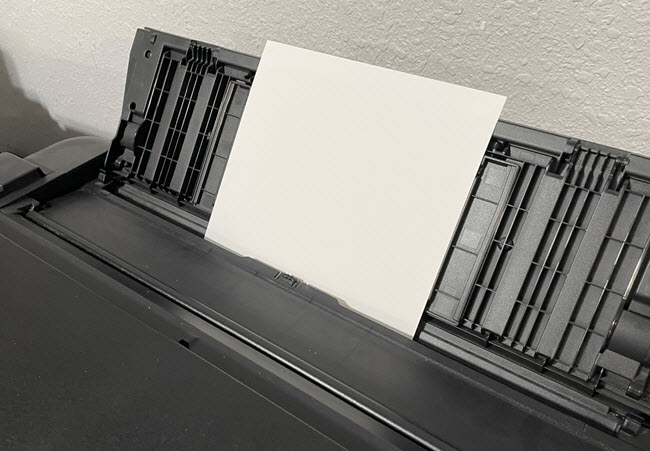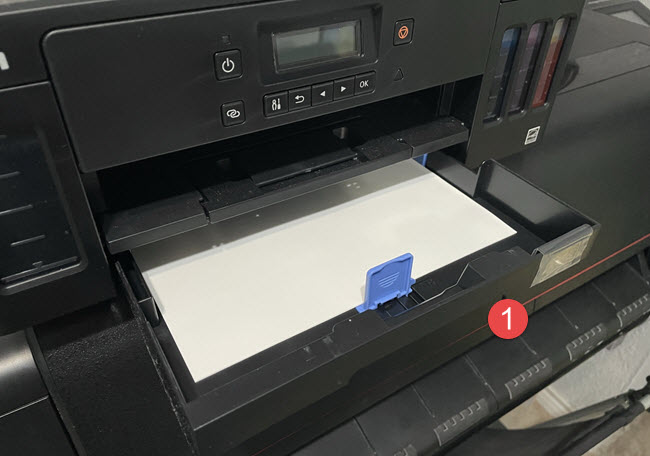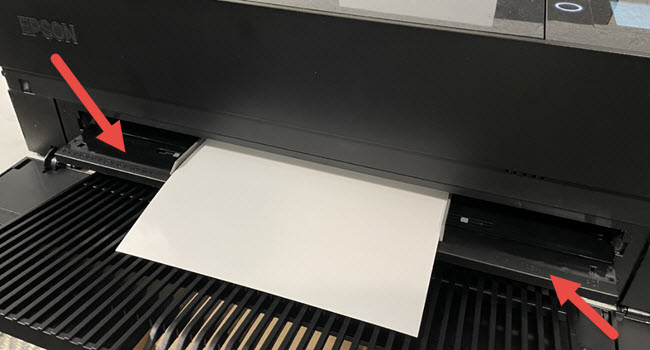Desktop inkjet printers feed paper in a number of ways. It is important to know how your printer works and what paper paths are available.
All desktop printers can used sheets. Some can even use rolls. In some cases they come ready to use rolls and in others, you have to purchase an adapter. The Epson SureColor P900 is an example of the latter.
What is a Rear Fed Printer?
Rear fed printers are printers that have a paper tray at the back and top of the machine. They most often hold multiple sheets.
This is the preferred design for papers over 10 mil thick. This is the majority paper intended for photo and fine art reproduction.

What is a Front Fed Printer?
If we refer to a printer as "front fed", we mean it only feeds paper from a cassette that loads from the front of the machine. Paper is pulled into the printer, makes a steep 180 degree turn, and comes back out of the printer.
This design is not friendly to heavy or thick papers. As a rule, we recommend using paper no thicker than 11mil. Your results may vary based on the printer make, model, and the paper being used.

Label #1 above shows the paper cassette pulled out from the printer.
What is a Specialty Paper Path?
A specialty paper path is a dedicated and distinct route within a printing device or machine that is designed to handle unique and non-standard types of paper. This specialized pathway is equipped with features and adjustments that ensure the smooth and precise movement of specialty papers, which can include materials like heavy cardstock, glossy photo paper, transparencies, labels, envelopes, and various textured sheets. Unlike standard paper paths, which are optimized for regular printer paper, the specialty paper path takes into account the diverse characteristics of these exceptional paper types. It often incorporates mechanisms to prevent paper jams, adjust for varying thicknesses, and maintain proper alignment during the printing or feeding process.
You will find models with a rear specialty path and those with a front path.
If you intend to use papers that are over 16 mil and thicker, consider a printer with a specialty path.
Examples
Front Specialty Feed Path

Epson P900 - Example of a front single sheet path.
Rear Specialty Feed Path

Canon PRO-1000 - Example of rear single sheet paper path.
Last updated: August 25, 2023




